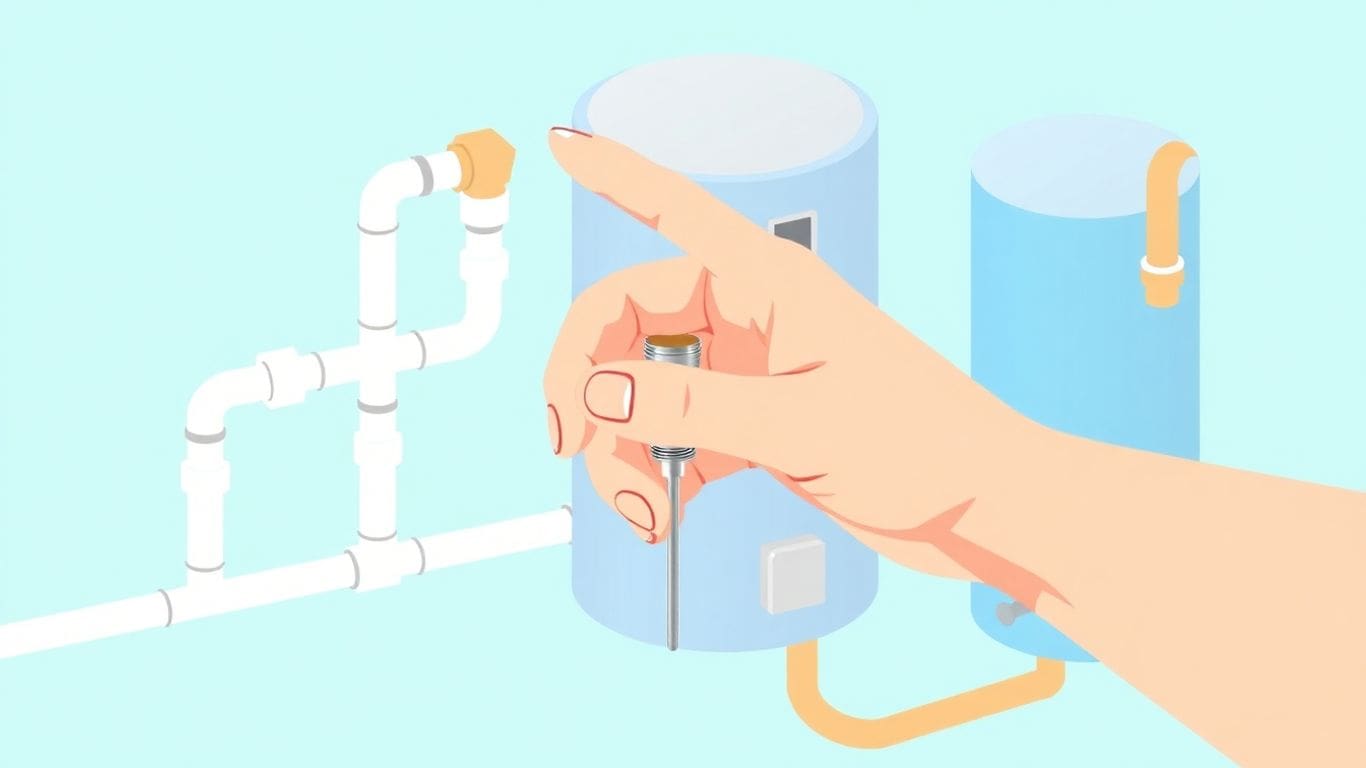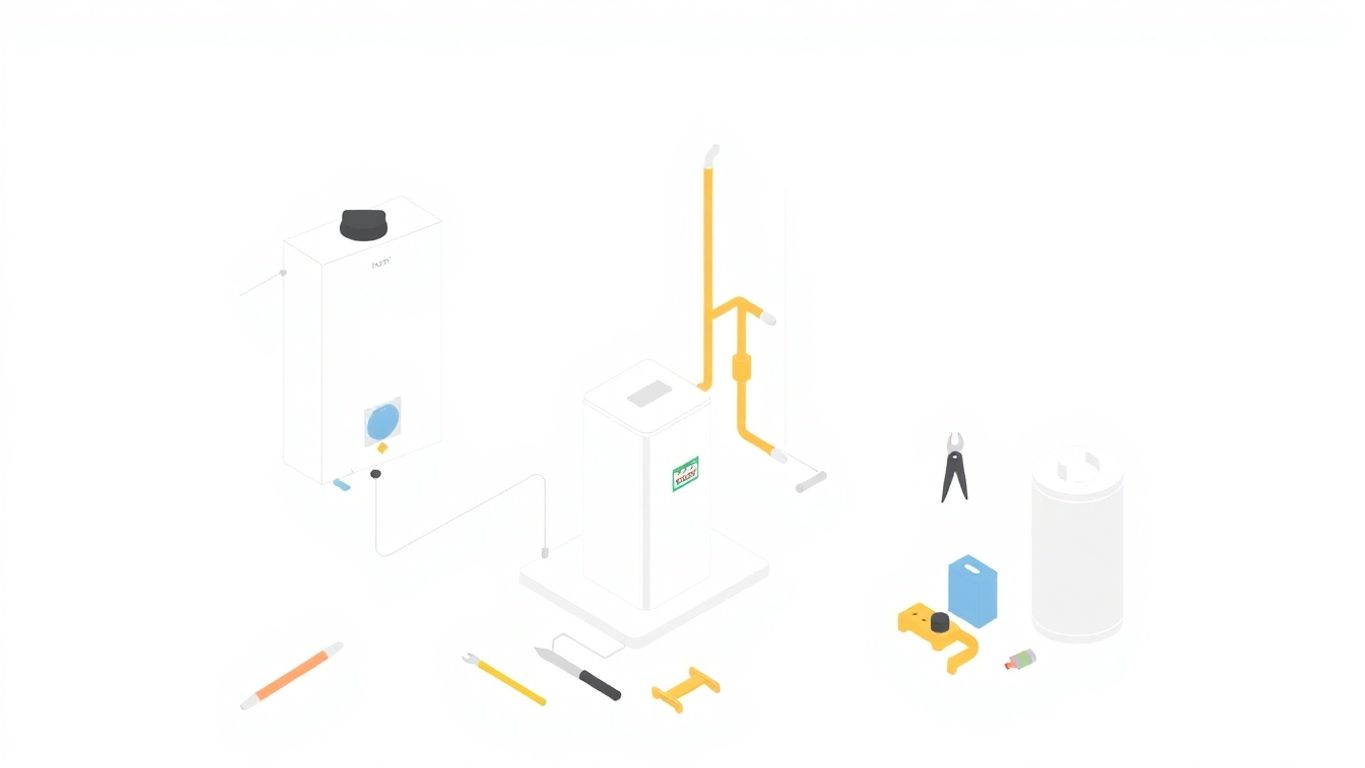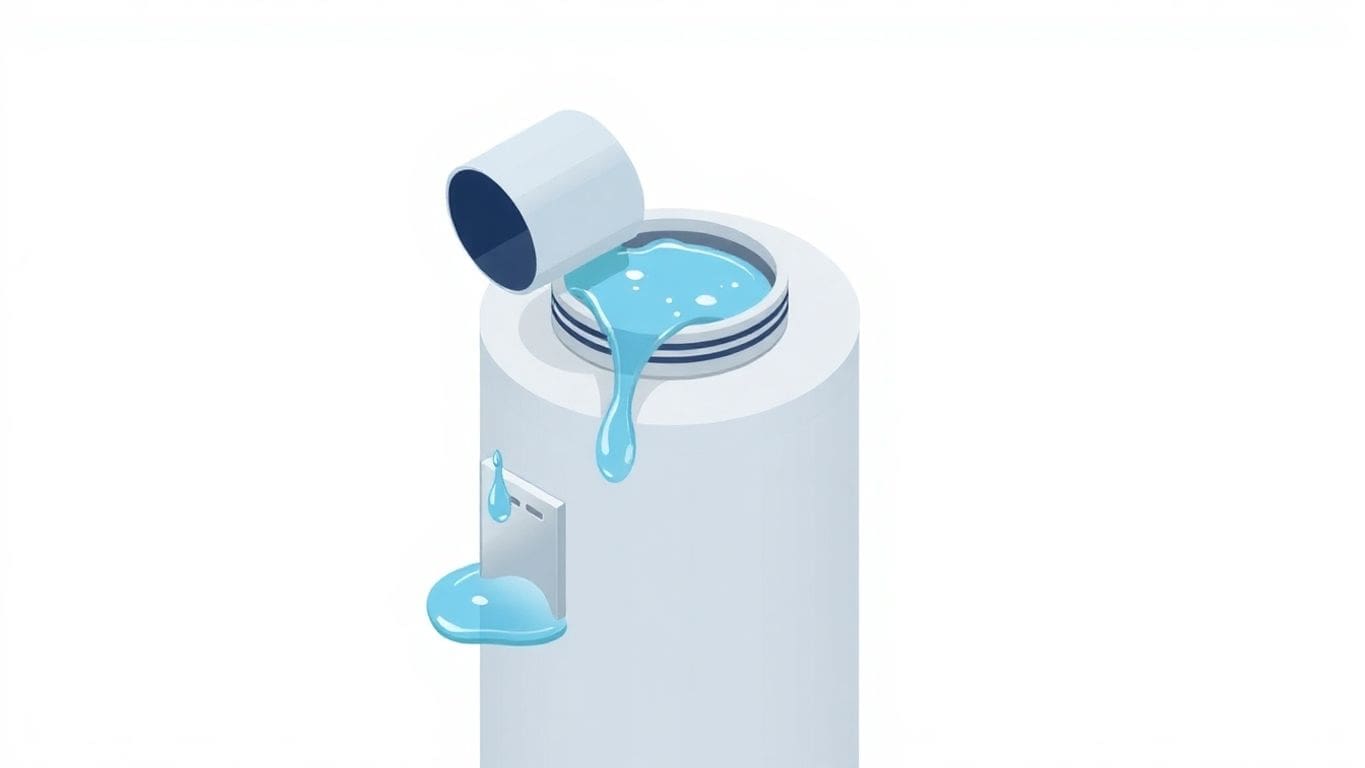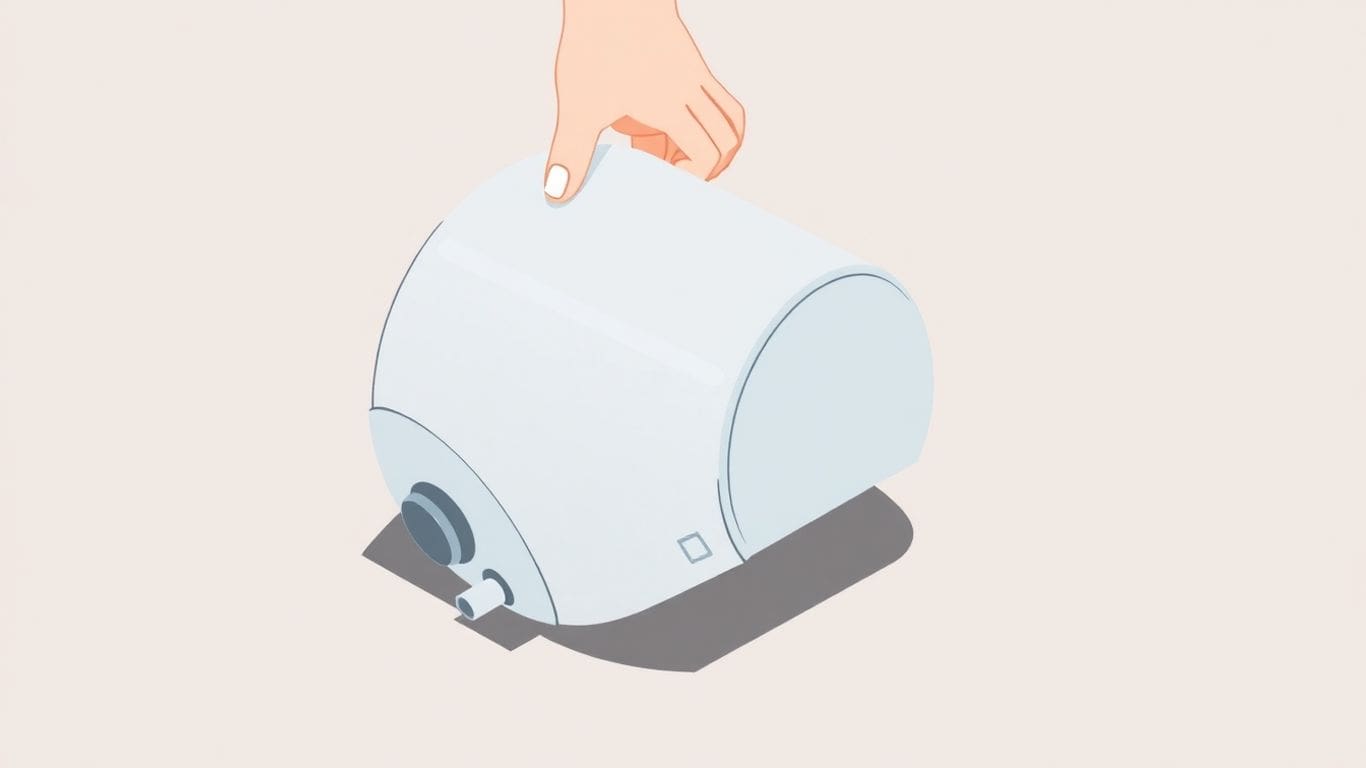
Thinking about swapping out your old water heater for something a bit more modern? An electric tankless water heater might just be the upgrade your home needs. Forget about running out of hot water during your shower or wasting energy on heating water you’re not using. This guide is here to walk you through the process of installing one of these efficient units in your home.
Switching to an electric tankless water heater can be a smart move for your home. One of the biggest perks is energy efficiency. Unlike traditional heaters that keep a big tank of water hot all the time, tankless heaters only heat water when you need it. This means less energy wasted and potentially lower bills.
Electric tankless water heaters are pretty straightforward. When you turn on the hot water tap, cold water travels through a pipe into the unit. An electric element heats the water instantly, so you get hot water on demand. There’s no need for a storage tank, which is why these heaters are sometimes called "on-demand" systems.
Here’s a quick look at how electric tankless water heaters stack up against traditional ones:
| Feature | Electric Tankless Heaters | Traditional Heaters |
|---|---|---|
| Energy Efficiency | Up to 30% more efficient | Standby heat loss |
| Hot Water Supply | Endless, continuous | Limited by tank size |
| Space Requirement | Compact, wall-mounted | Bulky, floor-standing |
| Lifespan | Over 20 years | 10-15 years |
Considering a switch to a tankless system? It’s not just about saving space, but also about improving your home’s efficiency and getting rid of "we’re out of hot water" moments. For more tips on maintaining your heater and keeping it in top shape, check out our comprehensive guides on maintaining and repairing water heaters.
Before you start, make sure you have all the tools and materials ready. This will save time and frustration. Here’s a list to get you started:
Having everything on hand makes the process smoother. Plus, check the manufacturer’s manual for any specific tools or steps.
Safety first! Before you start, turn off the main water supply and power. This prevents accidents while you work. Double-check that the circuit breaker is off—no electricity should flow to the old heater. Also, make sure the area is clear of clutter to avoid tripping.
Always put safety first to avoid accidents. It might seem like a hassle, but it’s worth the peace of mind.
Each tankless water heater is a bit different. So, it’s important to read the guidelines that come with your unit. They’ll tell you how to install it properly and safely. Follow these instructions closely to avoid mistakes. If something’s unclear, don’t hesitate to reach out to the manufacturer for help.
Taking these steps will set you up for a successful installation, reducing the chance of errors and ensuring your new heater works perfectly from day one.
When picking a spot for your electric tankless water heater, think about space and how easy it is to get to. Make sure you can reach it without any hassle if you need to do maintenance or fix something. You never know when you might need to check on it, especially if there’s a leak or another issue.
Ventilation is super important for these heaters. They can get pretty hot, and you don’t want them overheating. Adequate airflow is a must. Check what the manufacturer says about ventilation needs. They usually have specific instructions to keep everything running smoothly.
You also need to follow local building codes. These rules are there to keep your home safe. They cover things like where you can put your heater and how it should be installed. If you’re not sure, it might be a good idea to talk to a pro who knows the codes well.
Choosing the right spot for your tankless water heater isn’t just about convenience. It’s about making sure the unit works well and is safe to use. Consider these factors carefully to ensure your heater performs its best.
Before you start, make sure the power and water supply to your old water heater are turned off. This is super important to avoid any shocks or leaks. For electric heaters, switch off the circuit breaker. Use a voltage tester to double-check there’s no power. For gas heaters, turn off the gas supply. Then, turn off the water supply to the heater.
Next, you need to drain the old water heater. Here’s how:
Be careful, as the water might still be hot.
Once the unit is empty and disconnected, it’s time to remove it. You might need a friend to help if it’s heavy. Check with your local waste management for recycling options. Some places have special rules for disposing of old heaters.
Remember, safety first! Always wear gloves and safety glasses when handling the heater. Take your time and follow each step carefully.
First, you gotta find a good spot to hang your new water heater. Make sure it’s close to where the water and electricity come in. Use a stud finder to locate the wall studs. This helps you hang the unit securely. Attach the mounting bracket to the wall, ensuring it’s level. Lift the heater onto the bracket, following the instructions in the manual. Check it’s stable before moving on.
Next, it’s time to hook up the power. Make sure the electricity is off at the breaker box. This is super important for safety. Connect the wires from the water heater to your home’s electrical system. Usually, it’s best to get a professional for this part. They can make sure everything is done right and follows local rules.
Now, you need to connect the water pipes. Use flexible hoses to attach the hot and cold water lines to the heater. This helps prevent stress on the pipes and makes installation easier. Turn on the water supply slowly and check for leaks. Tighten connections if needed. When everything’s dry, you’re good to go.
Installing a tankless water heater can seem like a big job, but doing it right means more hot water and saving energy. Take your time and follow each step carefully. If you’re not sure, it might be worth calling in a pro to help out.

Once your new electric tankless water heater is installed, it’s time to set it up just right. You want it to give you the hot water you need without wasting energy. Here’s how you can do that.
First off, you’ll need to set the water temperature. Most heaters have a control panel or a digital screen for this. It’s best to start with a moderate temperature—not too hot, not too cold. You can adjust it later if needed. Just remember, setting it too high can waste energy and increase your bills. Check the manual for tips on the best settings.
Next, you should calibrate your unit. This means making sure everything is working as it should. Follow the instructions in the manual to do this. Usually, it involves checking the controls and making sure the system is heating water correctly. If something seems off, you might need to adjust some settings.
Finally, test your system. Turn on the hot water tap and see how it goes. Does the water heat up quickly? Is the temperature steady? If everything seems good, you’re all set. If not, you might need to tweak the settings a bit.
Taking the time to configure your water heater properly can make a big difference in how well it works and how much energy it uses. It’s worth the effort to get it right.
Ventilation is a big deal when you install an electric tankless water heater. These units generate heat, and without good airflow, they can overheat. Proper ventilation keeps your heater running smoothly and safely. Make sure you know what your specific model requires by checking the manufacturer’s instructions.
Setting up a ventilation system isn’t too tough, but it needs to be done right. Here’s a simple list to help:
After setting up, look around the heater area. Make sure nothing is blocking the vents. Obstructions can cause heat to build up, which isn’t safe. Regularly check that nothing is in the way, like dust, boxes, or other household items.
Keeping your water heater well-ventilated is not just about following rules; it’s about safety and efficiency. By ensuring proper airflow, you extend the life of your heater and keep your home safe.
Before you wrap things up, make sure all electrical connections are tight and secure. Loose wires can be dangerous, so give them a good check. Ensure everything is properly grounded to prevent any electrical shocks. If you’re not comfortable doing this, it might be wise to get a professional to look things over.
Turn on the water supply and carefully inspect all connections for leaks. Use a dry cloth to wipe around joints and fittings to spot any drips. If you see water, tighten the connections or use some plumber’s tape to seal them up. Leaks can cause damage over time, so it’s important to fix them right away.
Make sure your installation meets local building codes. This includes checking that all safety measures are in place, like pressure relief valves and proper venting. If you’re unsure about the codes, a quick call to your local building department can clear things up. Not only does this keep you safe, but it also helps avoid any legal issues down the road.
Taking the time to do these final checks ensures your water heater runs smoothly and safely. It’s not just about having hot water; it’s about peace of mind too. If you notice any persistent issues, like a water heater not heating, it might be time to call in a professional.

Keeping your tankless water heater in top shape means regular check-ups. Set a reminder to inspect your heater every six months. Look for any signs of wear or damage. Regular inspections can catch small issues before they become big problems. This can save you money and hassle in the long run.
Even the best systems can have hiccups. Here are some common problems and how to spot them:
Sometimes, DIY fixes aren’t enough. If you notice persistent issues or leaks, it might be time to call in a pro. Professional help ensures that your water heater is fixed safely and correctly. Don’t hesitate to get expert advice if you’re unsure about any step.
Thinking about installing a tankless water heater yourself? First, take a good look at what you know and what tools you have. Installing these heaters isn’t just about plugging them in. You might need to deal with electrical wiring and plumbing. If you’re not sure about these tasks, it might be best to get some help. Make sure you have all the right tools before you start.
Here’s a quick checklist to help you decide:
Hiring a pro has its perks. Professionals have done this many times before, so they know all the tricks. They can get the job done faster and safer. Plus, if something goes wrong, they know how to fix it.
Budget is a big deal when deciding on DIY or hiring help. Doing it yourself might save money upfront, but if mistakes happen, fixing them can be costly. On the other hand, hiring a professional can be more expensive initially, but it might save you money in the long run.
Here’s a simple table to compare costs:
| Option | Upfront Cost | Potential Extra Costs |
|---|---|---|
| DIY Installation | Low | High if mistakes occur |
| Professional | Higher | Lower due to warranty |
Remember, sometimes spending a little more now can save a lot later.
In the end, whether you choose to go DIY or hire a pro, make sure you feel comfortable and confident with your choice. It’s all about what works best for you and your home.
Using an electric tankless water heater can save energy, but you can do more to cut down on your energy bills.
Keeping track of how much water you use can help you find ways to save. Here’s how you can monitor your water usage:
Sometimes, parts of your water heater might need an upgrade to keep things running smoothly.
Keeping your water heater in top shape means paying attention to small details. Regular checks and upgrades can make a big difference in how well your heater performs and how much energy it uses.
For more on maintaining your water heater, see our regular maintenance guide. This guide covers everything from annual inspections to recognizing signs that it’s time for a replacement.
Yes, you can install it yourself if you follow the directions closely. But if you’re not sure about something or don’t have the right tools, hiring a professional is a good idea.
They save energy because they only heat water when needed, provide endless hot water, and take up less space.
Make sure to turn off the electricity and water supply. Also, drain the old water heater and ensure you have enough space for the new one.
First, turn off the water supply. Plan how you’ll lay out the pipes, cut them to fit, and install shut-off valves. Check for leaks after connecting.
Turn off the main gas supply, disconnect the old heater, cap open gas pipes, and ensure good ventilation. Call a professional if you’re unsure.
If you don’t have much experience or the right tools, hiring a professional is recommended. They can make sure everything is safe and follows the rules.
Set the water temperature, check electrical connections regularly, and perform maintenance checks to keep it working well.
Regular maintenance checks, like inspecting for leaks and ensuring proper water flow, should be scheduled to keep it running efficiently.



